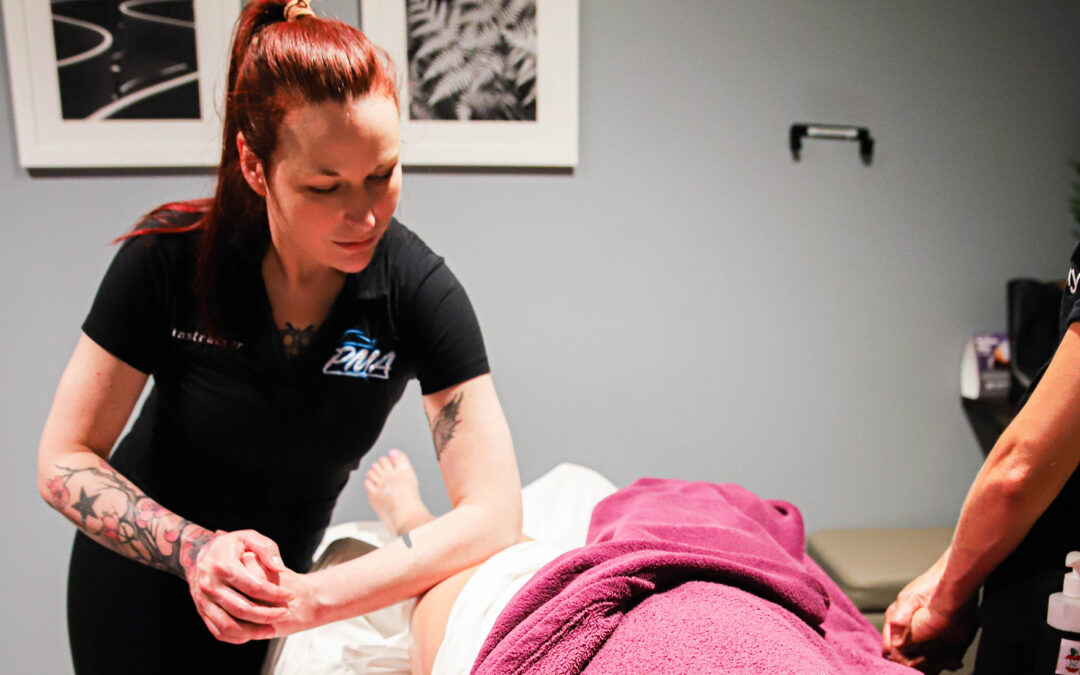When thinking about giving a massage, it’s essential to have a comprehensive plan of action for your entire session. This means understanding what massage modality best serves your client’s needs, which specific techniques you’ll employ, and how to maintain your energy and focus throughout the treatment. In today’s wellness landscape, clients are increasingly seeking therapeutic experiences that prioritize quality over quantity.
Start Slow and Be Intentional
Just like any endurance activity, it’s crucial not to start too aggressively or expend excessive energy early on, leaving you uncomfortable later in the session. Beginning with slow, deliberate movements allows both your muscles and your client’s tissues to properly warm up and adapt to the touch.
Slowing your movements transforms random motions into intentional, therapeutic strokes that help clients achieve deeper relaxation. This deliberate approach signals to your client that you are fully present and engaged during their session. Research in massage therapy continues to support the connection between slower, mindful touch and enhanced parasympathetic nervous system activation, leading to better therapeutic outcomes.
When practitioners move too quickly, clients may perceive the session as rushed or impersonal. Conversely, slower strokes can create the perception of a longer, more valuable treatment experience, increasing client satisfaction and retention.
Enhanced Assessment Through Slower Techniques
Slower massage strokes significantly enhance both the client’s experience and your ability to provide effective treatment. When moving too quickly, practitioners often miss crucial information about tissue quality, tension patterns, and areas requiring specific attention, such as trigger points or fascial restrictions.
The slower you work, the more detailed information your hands can gather about your client’s soft tissue condition. This enhanced palpation allows you to identify problem areas more accurately and adjust your treatment accordingly. Modern massage therapy education emphasizes this assessment-through-touch approach, recognizing that skilled palpation is fundamental to effective treatment planning.
Evidence-Based Stroke Application
Current massage therapy research supports specific stroke frequencies for optimal therapeutic benefit. Effleurage strokes, for example, should be applied at a frequency of 40-50 strokes per minute for maximum effectiveness. These foundational strokes include:
- Feathering or nerve-stroking: Light, superficial strokes that calm the nervous system
- Superficial effleurage: Gentle gliding movements that promote circulation and relaxation
- Deep effleurage: Firmer pressure techniques that address deeper tissue layers and adhesions
Each type serves a specific purpose in the treatment sequence and contributes to the overall therapeutic effect when performed at appropriate speeds.
Prioritize Client Communication and Safety
Excessive speed or aggressive techniques can cause discomfort or even injury to clients. Maintaining open communication throughout the session is essential for both safety and effectiveness. Regular check-ins help ensure that pressure, speed, and techniques remain within the client’s comfort zone while still achieving therapeutic goals.
Today’s massage therapy standards emphasize informed consent and continuous client feedback as cornerstones of professional practice. This collaborative approach builds trust and ensures that each session is tailored to the individual’s needs and preferences.
Professional Development in Modern Massage Therapy
At The Professional Massage Academy, we prepare our students with evidence-based massage techniques and professional skills essential for success in today’s competitive wellness industry. Our comprehensive curriculum addresses both traditional methods and contemporary approaches to therapeutic touch.
We understand that flexibility is key to pursuing massage therapy education, which is why we offer program start dates every two weeks and multiple online course load options. This allows students to begin their massage therapy journey in a way that fits their current life circumstances and career goals.
Whether you’re just beginning to explore massage therapy as a career or looking to enhance your existing practice, mastering the art of slower, more intentional touch will set you apart as a skilled and mindful practitioner in 2025 and beyond.


Recent Comments